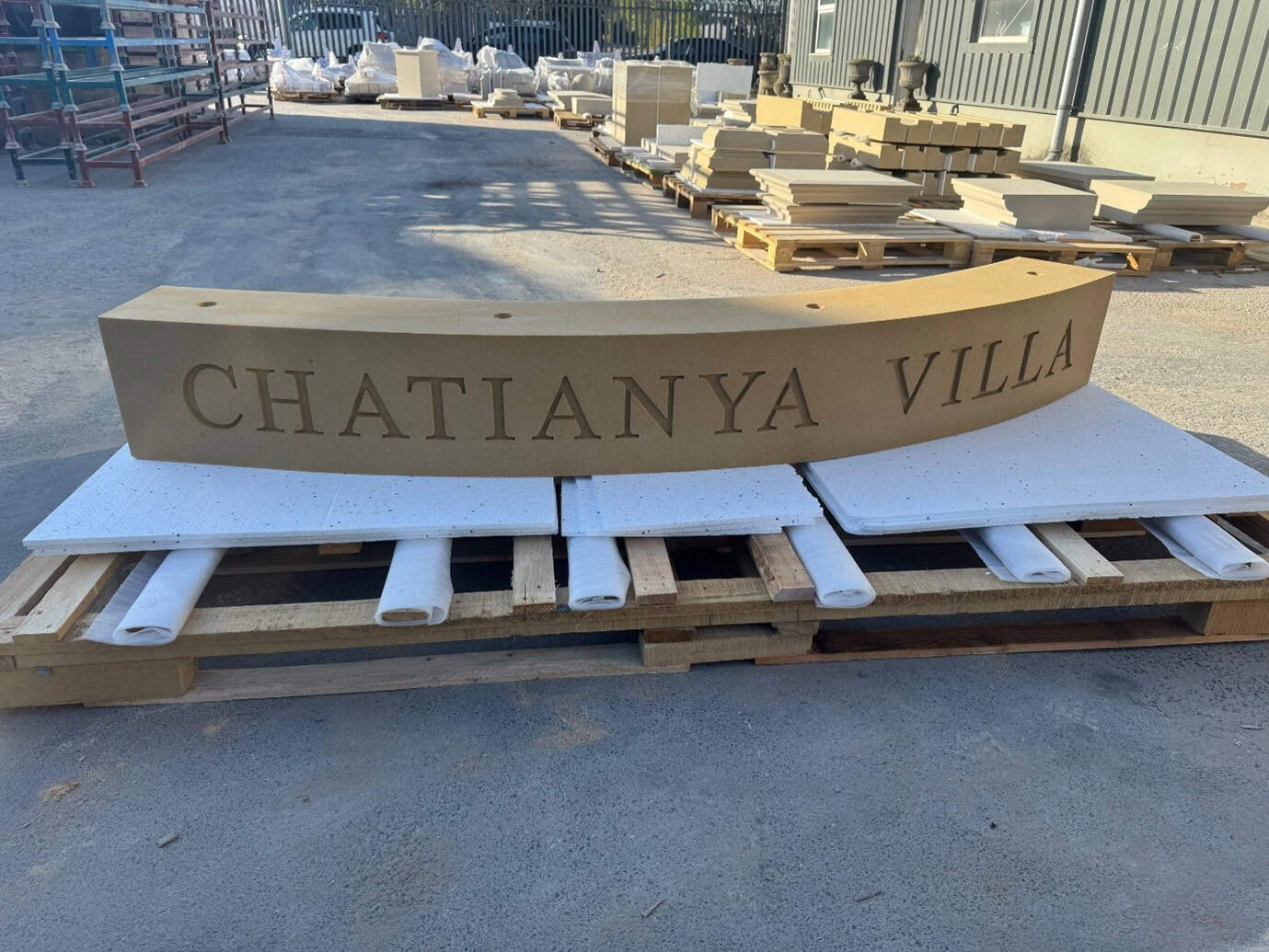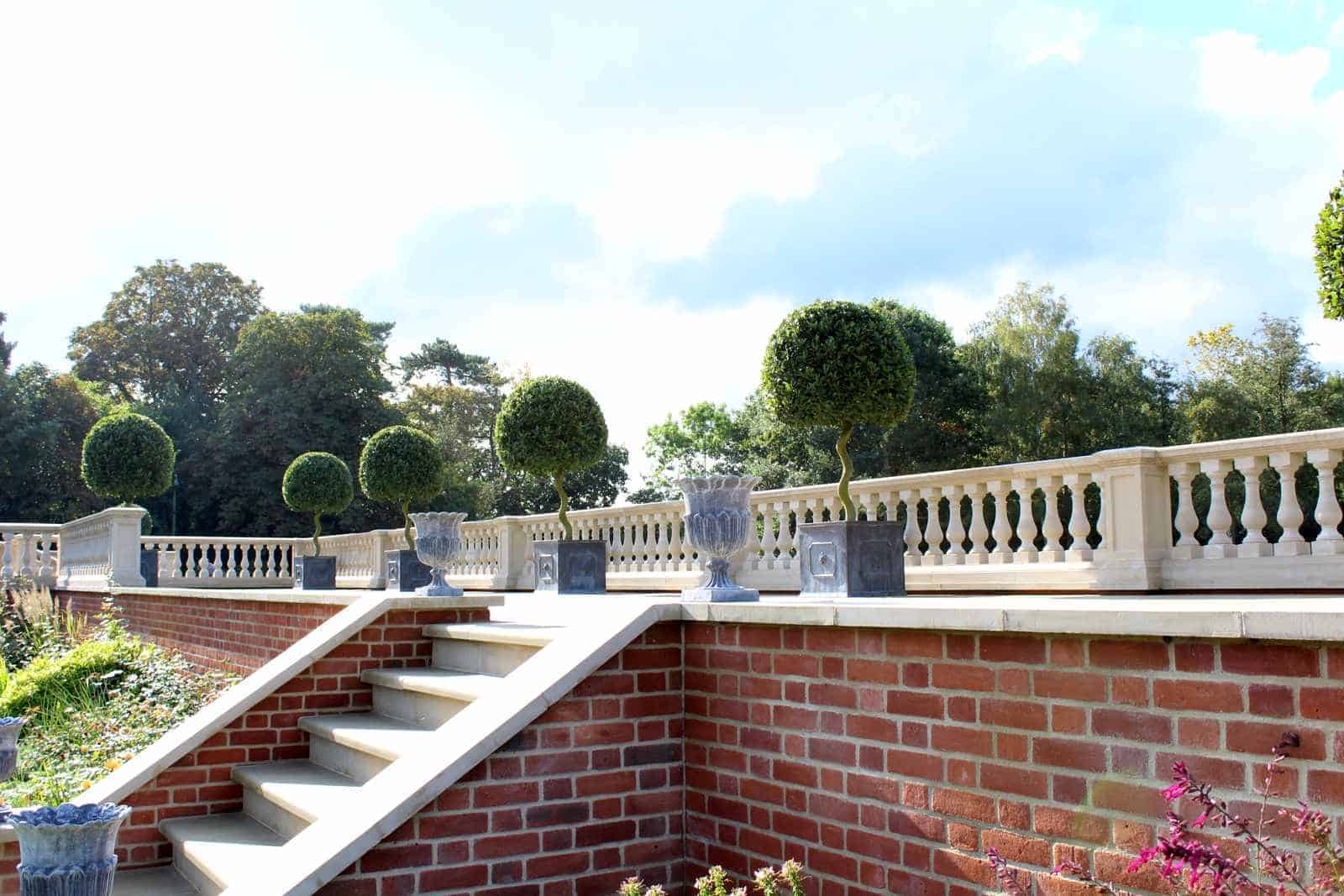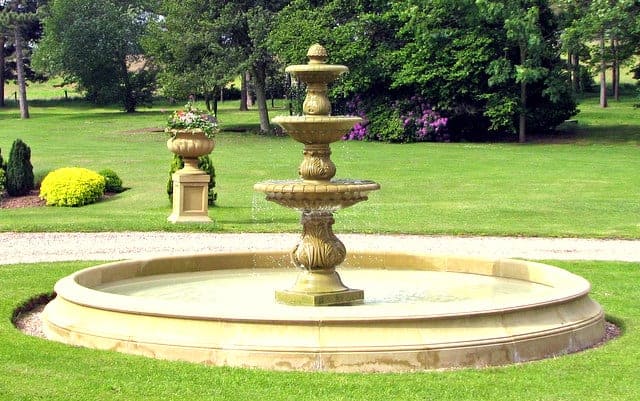That depends on where you’re using it.
Find out when you can use cast stone as a structural element, and when you will need to support it as a non-load bearing material.
Semi-dry cast stone is an attractive alternative to natural stone and is designed to simulate the appearance of natural cut stone.
The inherent strength and density of semi-dry cast stone material often exceeds requirements for structural integrity by a comfortable margin. This means cast stone can be used as a structural material where its own weight is supported. In walls, columns, and facades for example, or in balustrades, porticos and pillars.
That said, there are exceptions. Because cast stone is produced using high quality fine and coarse aggregates, and cast in moulds, it’s very strong in compression, but comparatively weak in tension.
This means that cast stone items such as heads, which are subject to both compressive and tensional forces, should be specified with care. Heads are supplied as decorative non-load bearing components. With heads it is important that they are used in conjunction with a steel support or lintel as they are not able to carry additional loads other than their own weight.
So, the answer to the question ‘Is cast stone structural?’, is it depends on where you’re using it. If you’re not certain, our expert team is always available to provide advice and technical guidance.
Is Cast Stone Load Bearing?
Cast stone is generally built into a load-bearing masonry wall system, and used as an architectural feature, trim, ornament, or veneer in traditional commercial and residential buildings and other structures. It is most often specified as a replacement for full bed-depth natural dressed dimensional limestone.
By their very nature, cast stone products are decorative units and are not designed to be load bearing in window heads and openings.
Steel support lintels are normally used below the decorative head to support the head itself and the masonry load above. There are however cases where it is desirable to fit the support lintel over the decorative head so that the head is self-supporting while the lintel carries only the load of the masonry from above. This should not be done without first consulting Acanthus, a UKCSA manufacturer.
Here at Acanthus, we always recommend that a structural engineer assess each project for design purposes. All fixings, supporting lintels and sections should be assessed in the original design stages.
Cast Stone Building Regulations
In the UK, it is normal to use the Building Regulation Standard “BS 1217 Cast stone – Specification” from the BSI Group.
Acanthus cast stone products are manufactured from high grade raw materials that have been chosen for their performance and suitability. The cement, pigments and waterproofing ingredients all conform to their relevant British or European standard.
Good building practice is essential when considering the design and use of all building materials including cast stone. General guidance can be found in the relevant British Standards such as BSI Standards Publication PD 6697: 2010 Recommendations for the design of masonry structures to BS EN 1996-1-1 and BS EN 1996-2.
All Acanthus products are manufactured to BS1217:2008 with compressive strength in excess of 35MPA @ 28 day period.
Are Cast Stone Lintels Load Bearing?
Cast stone lintels are themselves not load-bearing. While consistent in strength and durability – unlike natural stone which can have variations in strength depending on the section – cast stone lintels need the support of steel lintels in a load bearing environment.
Where large openings are required, any cast stone units over 600mm in length should contain one or more reinforcing bars for handling purposes only.
Cast Stone vs Concrete Lintels
Using concrete lintels is a common solution when a load-bearing material is required. They certainly offer tensile strength, as wet cast concrete is poured onto the steel frame to provide the required tension.
However, the issue with concrete lintels is that they will always look like concrete, and will never have the attractive appearance you’re guaranteed with cast stone. An effective solution is to use steel lintels with cast stone in front – providing tensile strength and an impressive looking façade.
Cast Stone Movement
The control of movement should be assessed at the design stage since all building materials are subject to dimensional change during and after construction, due to moisture movement, cyclic thermal movements, and chemical action ( i.e. carbonation). Deflection under load, ground movement or differential settlement may also have to be accommodated. This in general can be overcome by the use of movement joints, bed joint reinforcement and the correct specification of the mortar. Your architect should be able to advise on these points.
To reduce the problems with movement, ideally you should avoid using strong mortars, wherever possible, as these can introduce too much restraint into the masonry panel which could induce cracking.
Any settlement that occurs can put increased loads on some elements of the building, in the case of cast stone this would apply for example to one-piece cills and built-in thresholds. It is good building practice to bed only under the stooled ends of these units and to point up the remainder of the open bed joint at a later date with a mortar of the same strength. Alternatively, where practical, temporarily bed the cills in a lime:sand mix until the walls are completed, loaded and any initial settlement has taken place.
Cast Stone Durability
Cast stone is well known to be durable. Other than its durability, cast stone is also well known for its appearance and freedom from colour erosion, especially when exposed to weathering conditions. The durability comes from less water absorption, freeze-thaw resistance, and abrasion endurance. In addition to this, cast stone has low absorbency and supersedes the abilities and permeability of natural stone.
This durability enables cast stone to be longer lasting during winter seasons. Cast stone prevents colour disintegration by controlling moisture entering through the wall and the use of suitable mortars rather than attempting to reduce efflorescence qualities from cast stone itself.
Cast Stone Sustainability
Finally, it’s always important to remember that cast stone is a more environmentally friendly alternative to natural stone, offering a much lower carbon footprint as most natural stone is imported from overseas. The vast majority of our materials are sourced locally. This includes the sand that we use, and the crushed limestone. The only thing we import from outside our local area is the cement that goes into our products.
Is Cast Stone Structural? Talk to Acanthus
As you know, cast stone can be manufactured to produce architectural features that will enhance new buildings or match existing stonework on restoration projects.
Remember, care should be taken when using cast stone as a structural element… particularly in window heads and openings.
To discuss further how you can use cast stone as a structural material, and when you need to provide load bearing support, please do get in touch with our expert team today.
Request your free cast stone samples today
We offer free Cast Stone samples. You can request yours by clicking here. Remember, Acanthus will design, craft and deliver your Cast Stone products on time, on spec, and on budget.





